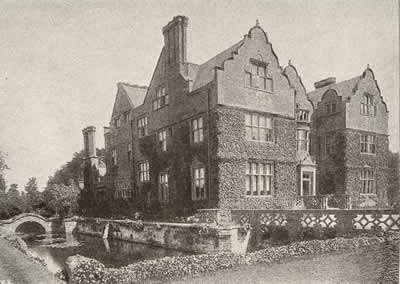A Brief History of Ludstone HallLudstone over the yearsThe earliest recordings of Ludstone date back to the year 1086. At that time, Ludstone belonged to Earl Roger Montgomery, the Earl of Shrewsbury. Ludstone, or Luddesden as the early recordings refer to it, was all part of the ancient royal manor of Claverley. In the year 1098, Roger Montgomery passed on the Ludstone estate to the deans of Bridgnorth. The deans ran the estate as a farm under monastic rule until the year 1547. Around the year 1400, the records show that Ludstone Hall comprised of several wooden buildings, arranged to form a courtyard within the moat. These included a hall with a great chamber, a kitchen, a bakery, a stable, a cowshed and a barn with a porch. There was also a moat house made from stone and wood. The records show that only one dean actually lived here at Ludstone; a Thomas of Tutbury in the year 1391. He held the deanery until 1403. At the time of his death, Tutbury was preparing to rebuild the manor house here at Ludstone. He left on site 11,000 shingles, 17,000 tiles and 300 great boards. He also reserved £100 for the dilapidations. These facts were all disclosed in 1410 when a commission was appointed to survey the dilapidations of the deanery. After Tutbury died, Henry the IV appointed a Scottish man to be the new dean, a Columba of Dunbar. Columba embezzled the £100 and sold off all the stone and boards for the rebuilding of Ludstone. Around 1548 Sir Robert Broke lived here at Ludstone Hall. Sir Robert was a speaker in the House of Commons and Chief Justice of Common Pleas. Claverley church contains the splendid renaissance tomb of him and his two wives. The existing house was built in 1607 by John Whitmore. It remained in the Whitmore family for over 250 years. In 1870 a Mr Joseph Round Cartwright purchased Ludstone Hall. Mr Cartwright was a brick manufacturer in Sedgley. Mr Cartwright made the gardens what they are today. It must have needed a lot of attention after being a farm for all those years. He made it basically simple yet wonderfully effective. Mr Cartwright built most of the outbuildings and he installed the lake at the front. The moat dates back to medieval times. It surrounds the house on three sides and meets the monastic fish pool at the rear. Legend has it that there is a tunnel from here to Claverley Church which the monks would use.
|
